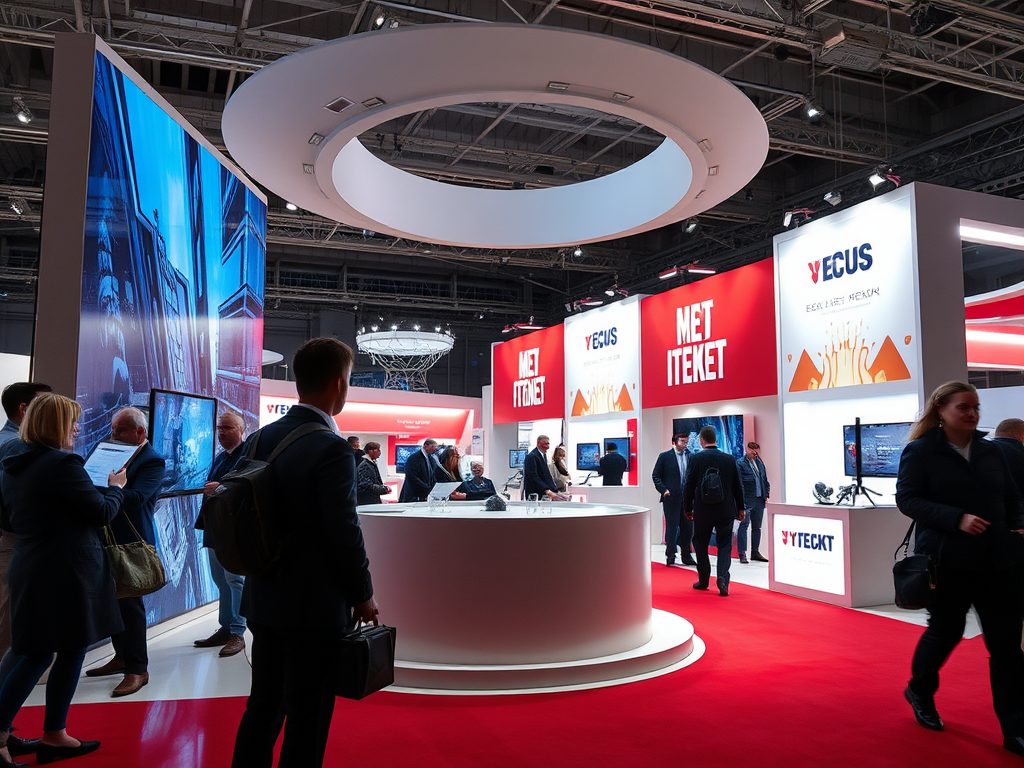Virtual and Augmented Reality in Digital Marketing
In a rapidly evolving digital landscape, brands are constantly seeking innovative ways to capture the attention of consumers. Enter virtual reality (VR) and augmented reality (AR), two groundbreaking technologies that are transforming the way businesses connect and engage with their audiences. These immersive experiences not only provide more interactive touchpoints but also allow consumers to delve into the brand narrative like never before. With their potential to drive engagement and foster loyalty, VR and AR are rapidly becoming indispensable tools in the marketer’s toolkit. This article explores the fascinating realm of VR and AR in digital marketing, highlighting their benefits, challenges, and future potential.
The intersection of technology and marketing is more vibrant than ever. As customers become increasingly demanding and discerning, brands are turning to advanced technologies that speak to their desire for personalization and immersive experiences. Utilizing VR and AR opens up a vast spectrum of possibilities that can redefine conventional marketing approaches. From virtual showrooms to AR-enhanced product listings, the integration of these technologies can elevate consumer interactions, making them not only memorable but also highly effective.
The Rise of Virtual and Augmented Reality in Marketing

Recent years have witnessed a dramatic surge in the adoption of VR and AR across various industries. Market research indicates that this growth shows no signs of slowing down. According to a report from Statista, the VR and AR market is projected to reach USD 209.2 billion by 2022, indicating significant consumer interest and investment. Brands recognize this potential and are increasingly willing to allocate budgets toward VR and AR initiatives.
Key factors contributing to this trend include the declining costs of VR and AR technologies, as well as advancements in smartphone capabilities. With more consumers equipped with devices that can support AR experiences, the opportunity for brands to harness this technology has never been greater. Moreover, contemporary marketing strategies increasingly emphasize experiential approaches, making VR and AR a natural fit. The unique capacity to create memorable experiences is paving the way for brands to stand out in an overcrowded marketplace.
Benefits of Using VR and AR in Digital Marketing

When implemented effectively, virtual and augmented reality can redefine how consumers perceive and engage with brands. Below are some notable benefits of incorporating VR and AR into digital marketing strategies:
- Immersive Experiences: VR can transport users to entirely new environments, while AR overlays informative and interactive elements onto the real world.
- Enhanced Engagement: Users tend to spend more time interacting with immersive content than traditional marketing formats, leading to higher retention rates.
- Personalization: Tailored VR and AR experiences can provide consumers with content and product recommendations suited to their preferences.
- Increased Brand Loyalty: Satisfying and memorable experiences can build emotional connections that translate into long-term consumer loyalty.
VR and AR excel in creating interactive narratives that hook users deeper into brand stories. With traditional media, engagement often falters; however, the immersive nature of VR and AR keeps users invested. For instance, instead of a static advertisement, AR can illustrate how a product fits into a consumer’s life, making the value proposition crystal clear. Furthermore, employing these technologies fosters an emotional connection between the brand and the consumer, increasing the likelihood of repeat purchases.
| Technology | Description | Applications in Marketing |
|---|---|---|
| Virtual Reality (VR) | A fully immersive experience that replaces the real world with a simulated environment. | Virtual showrooms, immersive product demos, and virtual events. |
| Augmented Reality (AR) | A technology that overlays digital information onto the real world. | Interactive ads, AR apps for product visualization, and experiential marketing campaigns. |
Case Studies: Successful Implementation of VR and AR
Analyzing specific examples can provide valuable insights into the effective application of VR and AR in marketing. One notable case is IKEA, which launched an AR app that allows consumers to visualize how furniture will look in their homes before purchasing. The app’s intuitive interface and engaging functionality capitalized on consumer hesitation while shopping online, resulting in a substantial increase in sales.
Nike also made waves with its VR experiences at product launches. By allowing customers to step into an athlete’s shoes literally, the brand immersed users in an unforgettable experience that effectively communicated brand values. These campaigns underline the potency of VR and AR as tools that can create deep connections, converting curious consumers into passionate brand advocates.
Best Practices for Implementing VR and AR in Marketing
To maximize the impact of VR and AR, brands should adhere to a few best practices when designing their marketing strategies:
- Understand Your Audience: Tailor VR and AR experiences to match the interests and expectations of your target demographic.
- Invest in Quality Content: Ensure the virtual experiences are both visually appealing and informative to maintain user engagement.
- Keep It Simple: Avoid overcomplexity; straightforward experiences tend to resonate more effectively with users.
- Monitor Feedback: Continuously collect and analyze user feedback to adapt and improve future VR and AR initiatives.
Challenges and Limitations of VR and AR in Marketing
While the opportunities presented by VR and AR are numerous, challenges also exist. Technology can sometimes be a barrier to entry, as not every consumer owns the hardware required to experience VR. Furthermore, the development and implementation of high-quality VR and AR campaigns can be costly. Businesses should also be aware of consumer steep learning curves associated with new technologies.
Future Trends in VR and AR for Digital Marketing
As technology evolves, so too will the applications of VR and AR in marketing. Experts predict an increase in AI integration to create even more personalized experiences. Innovations such as 5G technology are likely to make AR experiences smoother and more responsive, significantly enhancing user experience. Brands that invest now in VR and AR capabilities position themselves to be ahead of the curve as these technologies continue to mature.
Conclusion
Virtual and augmented reality represent a crucial evolution in digital marketing, offering brands the chance to redefine consumer engagement. By capitalizing on the immersive nature of these experiences, businesses can create memorable interactions that resonate deeper and foster lasting loyalty. The potential benefits justify the investment, even amid the challenges that accompany these technologies. As VR and AR continue to grow and refine, the future of marketing looks set to be more interactive, immersive, and enriched.
Frequently Asked Questions
- What is the difference between virtual reality and augmented reality? Virtual reality creates a completely immersive digital environment, while augmented reality overlays digital information onto the real world.
- How can businesses benefit from using VR and AR in their marketing strategies? Businesses can enhance engagement, create immersive experiences, and differentiate themselves in a crowded market, leading to increased customer loyalty.
- What are some examples of successful VR and AR marketing campaigns? Notable examples include IKEA’s AR app for furniture visualization and Nike’s VR experiences at product launches that immersively connect customers with athletes.
- What challenges might companies face when implementing VR and AR? Companies may encounter technological barriers, high costs, and the need to educate their audience about these new tools.
- What does the future hold for VR and AR in digital marketing? Future developments may include more sophisticated technologies, wider consumer adoption, and innovative marketing methods that further immerse customers in brand experiences.
